Carolina Larkspur, Blue Larkspur, Glade Larkspur, Prairie Larkspur, Pine Woods Larkspur - Delphinium carolinianum
|
Delphinium carolinianum - Carolina Larkspur, Blue Larkspur, Glade Larkspur, Prairie Larkspur, Pine Woods Larkspur. Delphinium is a large genus of about 300 species, with over 60 found in North America - most of them native, all of them poisonous, so do not ingest. The majority of the North American species are western and northwestern species, with only a few found east of the western great plains. Delphinium carolinianum - Carolina Larkspur - is among those found in the eastern part of the nation, with a fairly wide distribution primarily in the midwest, extending south into Texas and Louisiana, and eastward to Kentucky, Tennessee, and South Carolina.
Delphinium carolinianum has four accepted subspecies:
- ssp. carolinianum (Blue Larkspur, Prairie Larkspur) will usually not have its basal leaves present at anthesis (while flowering) - all other subspecies' basal leaves are normally present at anthesis. The sepals of this subspecies are usually blue or purple, but occasionally white. This species has a wide distribution in the south extending up into the midwest as far north as Iowa.
- ssp. calciphilum (Glade Larkspur) is found east of the Mississippi in limestone glades of AL, GA, KY, and TN. Sepals are white to pale blue. This is generally the shortest of the subspecies, usually no more than 18 inches tall. This is the subspecies presented on this page.
- ssp. vimineum (Pine Woods Larkspur, Blue Larkspur) is another widely distributed subspecies, found in the midwest from Texas north to Minnesota and the Dakotas into Manitoba, Canada. It will rarely have more than 3 leaf divisions, and the flowers may have blue or white sepals.
- ssp. virescens - (Plains Larkspur, White Larkspur) Some authorities consider this subspecies to be synonymous with ssp. calciphilum. With some minor morphological differences in the leaves and height (ssp. virescens more in both attributes), ssp. virescens is found west of the Mississippi River in deeper soils, while ssp. calciphilum is found east of that river in shallow soils of limestone glades. The sepals are white or very pale blue.
Subspecies calciphilum is presented here.
Found in:
AL, AR, CO, FL, GA, IA, IL, KS, KY, LA, MN, MO, MS, ND, NE, OK, SC, SD, TN, TX, WI
Leave comments on Delphinium carolinianum at this link. | 
Distribution of Delphinium carolinianum in the United States and Canada:
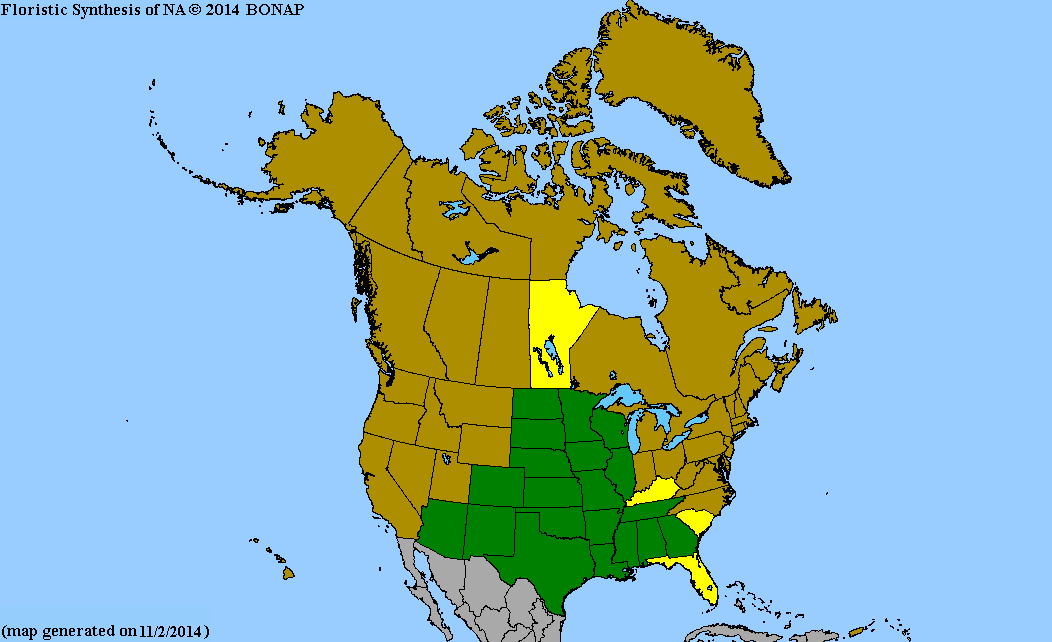
Map courtesy of The Biota of North America Program.
Map color key
Search Our Database: Enter any portion of the Scientific, Common Name, or both.
Do a general Google search of the entire site:
#ad
 Follow USWildflowers on Twitter
#ad
| | Site: Couchville Cedar Glade, Davidson County, TN Date: 2017-May-11 | Photographer: Gerald C. Williamson
Nikon D7000
Tamron SP 90MM f/2.8 AF Macro | | The flower of Delphinium carolinianum can be from white to pale blue to deep blue or purple, depending on the subspecies. Most of the color is from the 5 petal-like sepals which spread around the rest of the flower. It has 4 petals, the upper two enclosed in (or exserted from) the upper sepal, which is spurred, with the spur containing the nectary. The lateral 2 sepals flank the lower 2 petals which have two lobes each. The stamens are held below the lower 2 petals, but can seem to be held up by the lower 2 sepals. | | 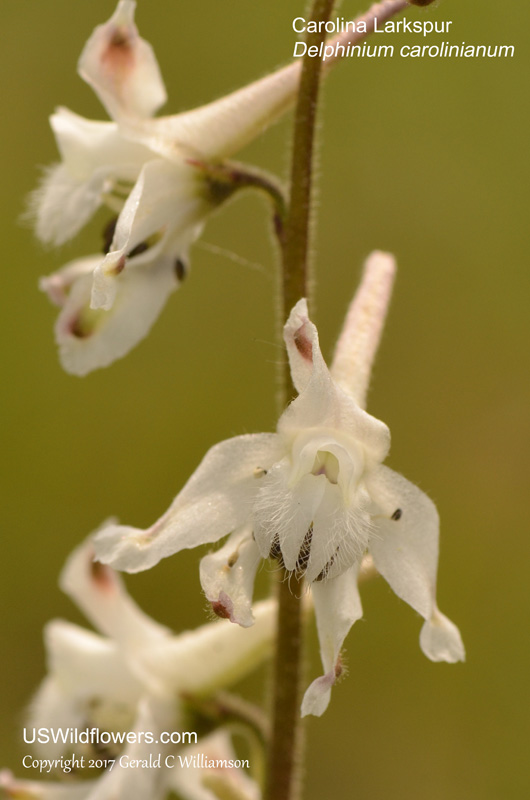
| | Site: Couchville Cedar Glade, Davidson County, TN Date: 2017-May-11 | Photographer: Gerald C Williamson
Nikon D7000 | | The stamens are held below the lower 2 petals, but can seem to be held up by the lower 2 sepals. While the sepals are glabrous to slightly hairy, the petals are definitely hairy. The hairs can be white, yellow, or blue. The pedicel can be glabrous to glandular hairy. | | Click on the photo for a larger image
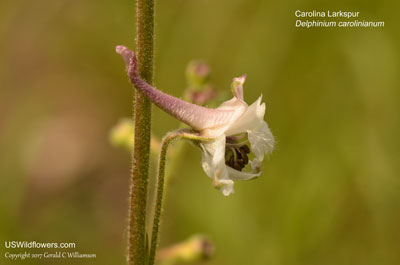
| | Site: Couchville Cedar Glade, Davidson County, TN Date: 2017-May-11 | Photographer: Gerald C Williamson
Nikon D7000 | | The inflorescence of Carolina Larkspur is a raceme of up to 30 or 40 white to blue or purple spurred flowers. The plant can grow up to 4 feet tall, with ssp. carolinianum generally the tallest of the subspecies. | | Click on the photo for a larger image
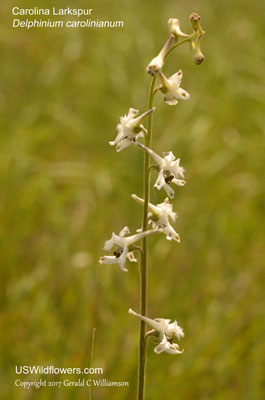
| | Site: Couchville Cedar Glade, Davidson County, TN Date: 2017-May-11 | Photographer: Gerald C Williamson
Nikon D7000 | | Both the cauline (stem) and basal leaves are on petioles, and are divided into relatively narrow segments. The number of leaf segments, and whether or not they are further subdivided is a diagnostic for subspecies.On the leftmost basal leaf in this plant you can see the 3 distinct leaf segments, each of which are further lobed. | | Click on the photo for a larger image
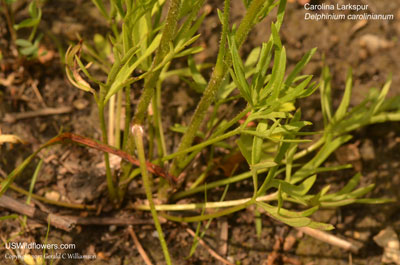
| | Site: Couchville Cedar Glade, Davidson County, TN Date: 2017-May-11 | Photographer: Gerald C Williamson
Nikon D7000 | | The petioles get shorter up the plant. The stem is usually pubescent to densely hairy, frequently glandular. | | Click on the photo for a larger image
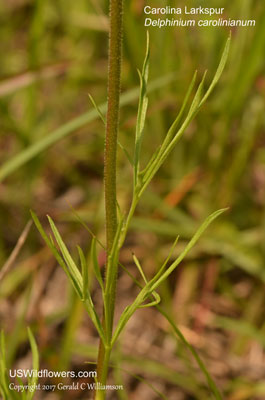
|
References used for identification and information:
|
|
| |
| #ad
|
|







